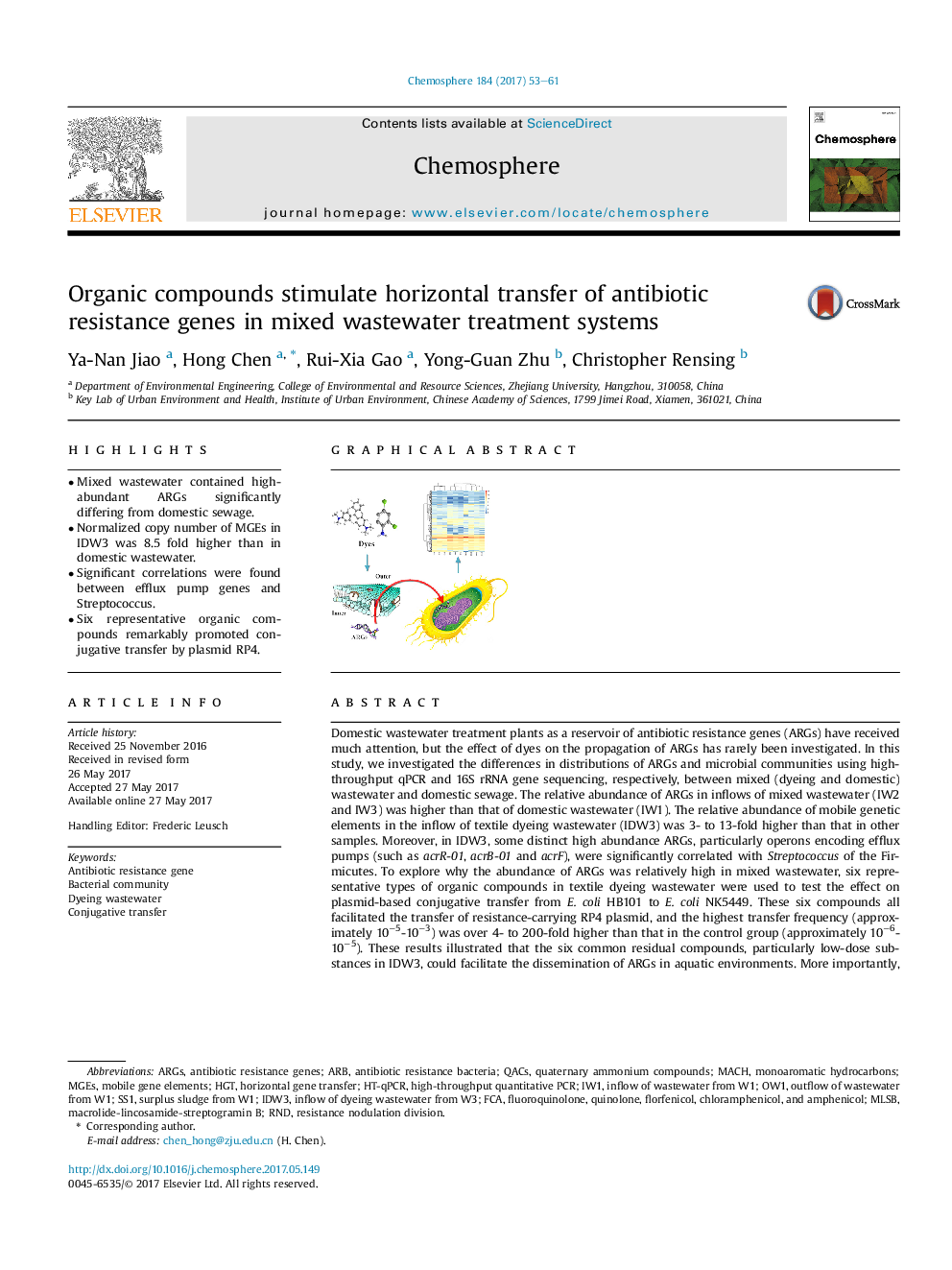| کد مقاله | کد نشریه | سال انتشار | مقاله انگلیسی | نسخه تمام متن |
|---|---|---|---|---|
| 5746178 | 1618787 | 2017 | 9 صفحه PDF | دانلود رایگان |
- Mixed wastewater contained high-abundant ARGs significantly differing from domestic sewage.
- Normalized copy number of MGEs in IDW3 was 8.5 fold higher than in domestic wastewater.
- Significant correlations were found between efflux pump genes and Streptococcus.
- Six representative organic compounds remarkably promoted conjugative transfer by plasmid RP4.
Domestic wastewater treatment plants as a reservoir of antibiotic resistance genes (ARGs) have received much attention, but the effect of dyes on the propagation of ARGs has rarely been investigated. In this study, we investigated the differences in distributions of ARGs and microbial communities using high-throughput qPCR and 16S rRNA gene sequencing, respectively, between mixed (dyeing and domestic) wastewater and domestic sewage. The relative abundance of ARGs in inflows of mixed wastewater (IW2 and IW3) was higher than that of domestic wastewater (IW1). The relative abundance of mobile genetic elements in the inflow of textile dyeing wastewater (IDW3) was 3- to 13-fold higher than that in other samples. Moreover, in IDW3, some distinct high abundance ARGs, particularly operons encoding efflux pumps (such as acrR-01, acrB-01 and acrF), were significantly correlated with Streptococcus of the Firmicutes. To explore why the abundance of ARGs was relatively high in mixed wastewater, six representative types of organic compounds in textile dyeing wastewater were used to test the effect on plasmid-based conjugative transfer from E. coli HB101 to E. coli NK5449. These six compounds all facilitated the transfer of resistance-carrying RP4 plasmid, and the highest transfer frequency (approximately 10â5-10â3) was over 4- to 200-fold higher than that in the control group (approximately 10â6-10â5). These results illustrated that the six common residual compounds, particularly low-dose substances in IDW3, could facilitate the dissemination of ARGs in aquatic environments. More importantly, this study revealed for the first time that dyeing contaminants influenced horizontal gene transfer (HGT) of ARGs.
241
Journal: Chemosphere - Volume 184, October 2017, Pages 53-61
